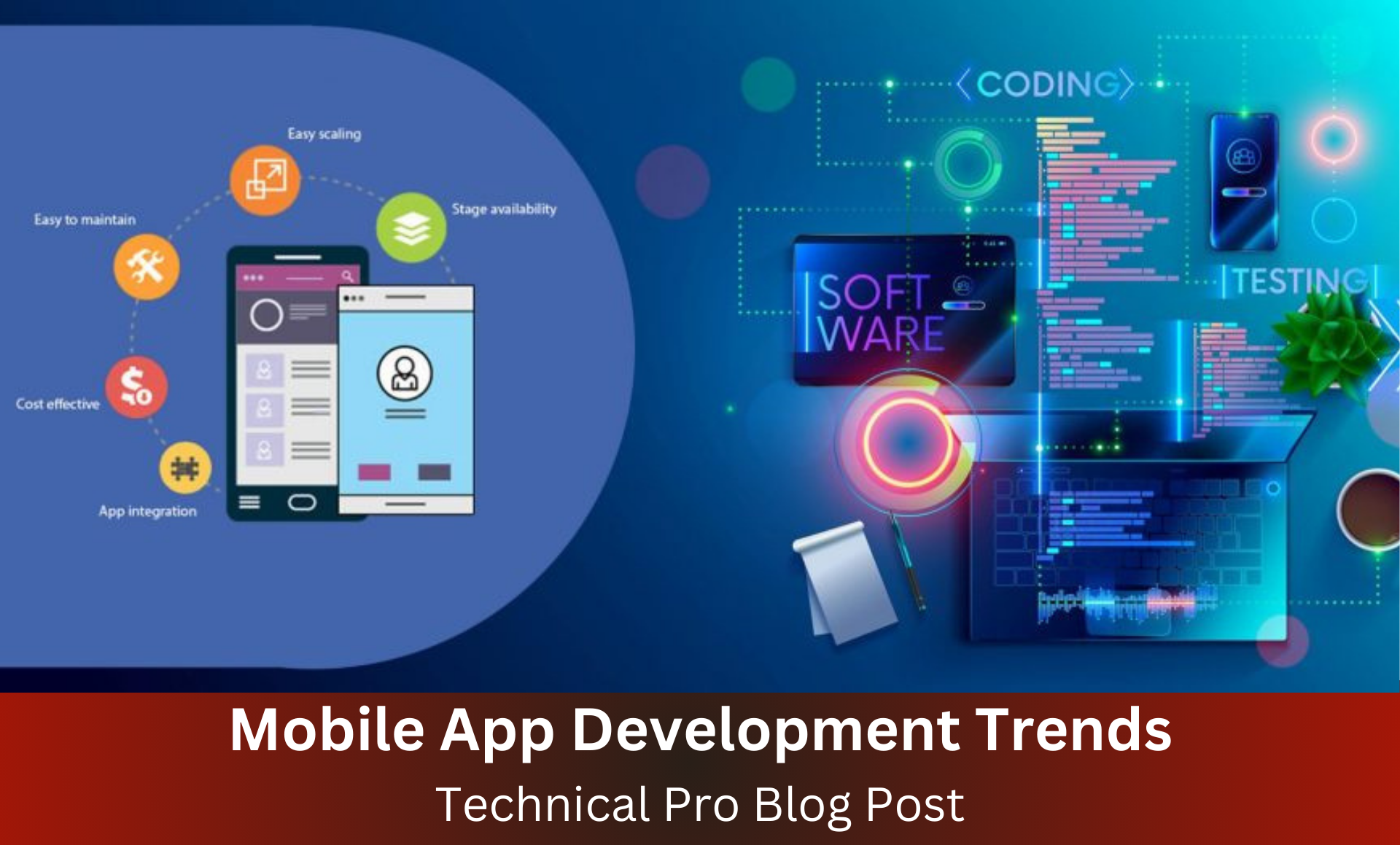This field of mobile application development is in constant flux due to the constantly growing and evolving wheel of technologies and user tendencies. Being aware of the significance of mobile applications and the increasing number of smartphone and tablet users, the demand for fresh ideas, logical interfaces, and effective apps is highly demanded. This is especially important whether you are a beginner learning the basics in the software development field or you have already set up your own company and want to keep your fingers on the pulse of the latest innovations in the field. This piece will expand on the most massive and beneficial trends that will define the future of mobile app development.
Rise of 5G Technology Mobile App Development

Faster Speeds and Lower Latency
Recently, the development of the fifth generation of connectivity also known as the 5G has emerged as the future of mobile applications. It is a generation with much higher speed and low latency than previous generations, thus the data can be sent in real time in addition to its connectivity. Improve is highly useful especially in the cases where real-time updates are expected, live streaming and high-definition video chats. These capabilities can be used by developers to enhance the user engagement capabilities of the app, ultimately leading to a more effective and smoother operation.
Enhanced User Experiences
When it comes to the promise that’s given by 5G in terms of improving the customers’ experience it practically has no limits. Newly developed applications can also contain deeper integrated and data processors which enhance program’s performance, for example, AR and VR. For example, while using AR apps, one may be able to experience real life and live use of products through augmented reality applications in the retail sector where one sees how the products fit in his or her homebefore making the purchase. In the same way, the current technology of VR can enable trainees to perform the training simulations and convert the realms such as healthcare, education as well as entertainment.
Artificial Intelligence and Machine Learning Integration

Personalization and Predictive Analytics
AI and ML usage in the development of Mobile App Development is slowly but surely entering the mainstream stage. These technologies allow apps to acquire habits of users and create individualized conditions specifically for each person. For instance, the use of recitation of similar items in the e-commerce application in which an AI bot can recommend products based on the customer’s past buying behavior, his/her search history or even the basic demographics of the user. It not only increases customer satisfaction but also creates greater returns for the company.
AI in Customer Service
It is also transforming the way that customer relationships are managed in the context of mobile apps. Popular use cases that could be managed by chatbots, virtual assistants are customer services, enabling instant response to inquiries without intervention from human personnel. It is also possible to create voice applications that can parse the most popular questions’ answers, solve the issues, and even perform the orders for creating a comfortable customer-oriented conversation. Therefore, on one hand, the buying organization is able to increase the satisfaction of the customers, but on the other hand, the buying organization is able to decrease its buying organization’s costs during its operation.
Augmented Reality (AR) and Virtual Reality (VR)

AR in Retail and Shopping
It could be noted that AR / VR technologies are no longer limited to the gaming sector as well as now gaining the opportunity to enter other fields, especially in the sphere of retail. AR can complement the shopping experience by enabling customers see how the product will look from their perspective without actually purchasing it. For example, furniture stores can provide AR applications for shoppers to visualize how a particular sofa or table will be used within the consumers’ home and thereby, there will be less probability of the item being returned and the buyer being unsatisfied with their purchase.
VR in Gaming and Training
Virtual Reality (VR) remains a hot topic in the gaming industry and has revolutionized the way in which players are not only placed into new realms but can feel like they are in them. Apart from these, the application of VR is not limited to entertainment alone, there are also training and education. Some key sectors which are embracing VR include Health care and military in that it is used in simulation that enhances the mentors ability to model scenarios providing practice conditions.
Cross-Platform in Mobile App Development
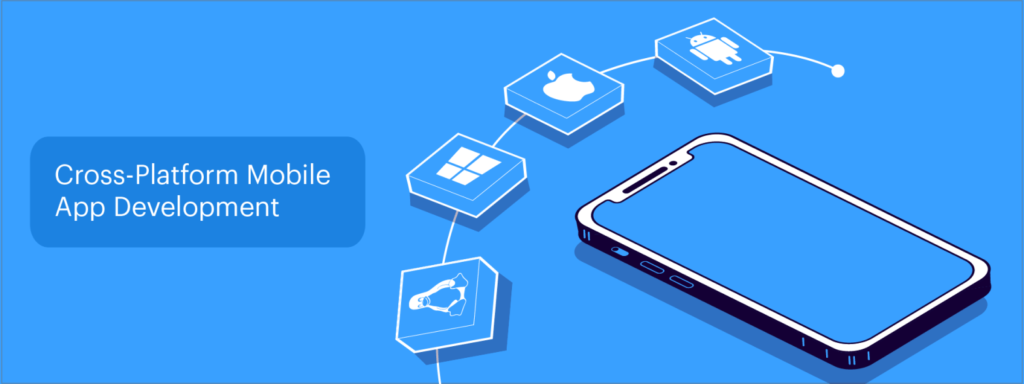
Advantages of Cross-Platform Tools
There has been rising tide in concurrent development where an organization targets a broad market so as to be served without having to download different apps depending on the operating system of the device being used to access the developed app. There exist numerous cross-compilation tools, for instance, React Native and Flutter, through which developers can design and develop their applications that run on both iOS and Android. It is an efficient way of working that also benefits from creating a more uniform experience of the site across devices.
There are many popular frameworks today such as React Native and Flutter.
Out of all the frameworks available for cross-platform development, React Native and Flutter are one of the most popular tools among developers. Facebook has created an application known as React Native, which allows the creation of mobile app development using JavaScript and React. It has a diverse and stable environment, and many developers are working with this platform, which also allows you to work on projects for different platforms. Flutter, created by Google, has flexible settings and high performance, as it is built using the Dart scripting language. One of the significant advantages is the Hot-Reload feature where developers get to see changes as they happen making it quick to identify and correct mistakes.
Increasing Integration of Internet of Things (IoT)
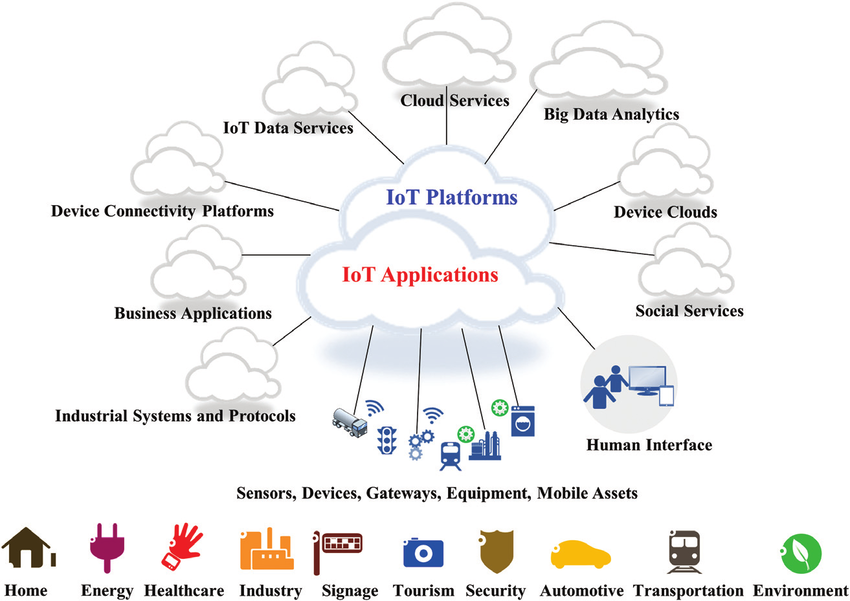
Smart Home Applications
The technology has been shifting through the Internet of Things (IoT), and organizing the application’s place in this environment. With the help of IoT, basic mobile app development can also oversee and manage different smart gadgets including thermostats, lights, and security frameworks. For instance, smart home applications, which control the environments within homes, allow customers to regulate their homes’ temperatures, turn on/off lights, and receive security notifications from their mobile devices. The degree of control and the freedom that it offers make smart home technology popular and accepted by society.
Wearables and Health Apps
Smart wearables include smartwatches, fitness trackers, and other wearable technologies, which people are using widely – all of this needs corresponding applications for data monitoring and interpretation. Smart applications are also in the area of health and fitness; applications can monitor user activities, heart rates, and even general trends relating health. For instance, an app used together with a smartwatch would be used in monitoring steps taken, the heart rate, and even the sleep quality thus promoting healthy living among the users. This combination of IoT with mobile app development has brought a new level of change in self health monitoring and promoting early best practices about health.
Increased Focus on App Security
Data Encryption
While apps are growing more sophisticated and carrying out distinct functions and tasks, security has emerged as a paramount consideration for creating mobile app development. Encryption of data is another effective way by which organizational data from the different users can be prevented from the effects of cyber criminals. Firstly, it is used to prevent developers from reading data since, although it may be collected, it cannot be read by other parties. This protection is necessary for the apps that require sensitive operations such as in the case of transferring money, inputting the personal detail or making secure communication. Some ways that Facebook can certainly protect its users are through picking better encryption policies and policies and updating them more often.
Secure Authentication Methods
Otherforms of authentications also include the use of biometric authentication and multi-factor authentication (MFA) in the mobile applications significantly enhances security. Fingerprint and facial recognition authentication are other methods that users can provide to authenticate themselves, and in so doing gain access to the various applications. Multi factor authentication or MFA ensures that users must enter 2 or more factors to verify their identity for instance a password and a code on their phone thereby making it more secure for users as it is not easy for an unauthorized person to verify. These methods are essential for securing the user accounts and to avoid ease of access by the intruder.
Blockchain Technology
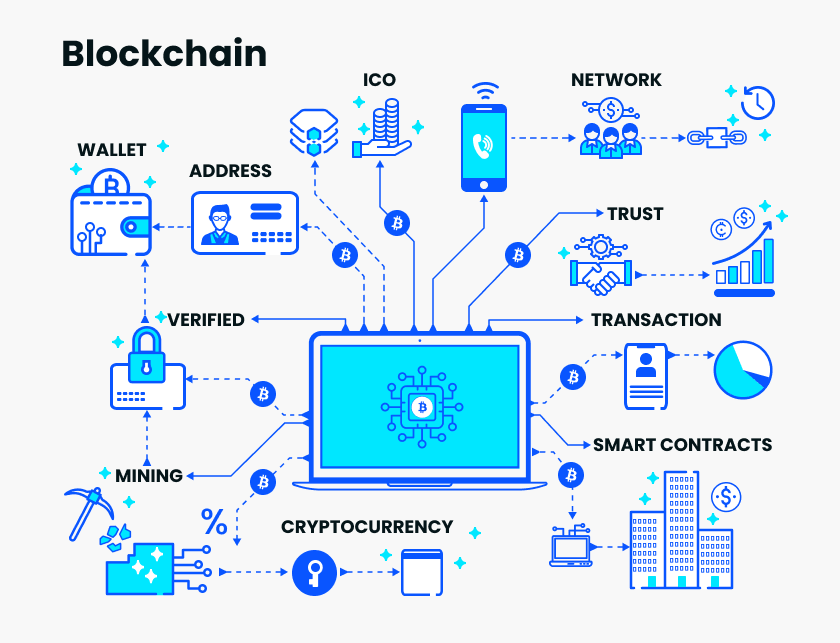
Secure Transactions
Blockchain is proving to be popular in mobile app development with a specific focus and application in use cases where the use of transactions is very important. It bring in decentralized ledger that is resistant from disastrous control and forge. Overall, this kind of technology proves useful for meeting the needs of financial applications where the emphasis is placed on confidentiality and openness of activities performed by an application. Through blockchain, application developers can build the app that possesses the account ledgers of people’s transactions so that there is no fraud involved and users trust the app.
Decentralized Applications (DApps)
DApps, or decentralized applications, use blockchain as their foundation for running without the need for a supervisory authority. These applications provide higher levels of security, visibility, and reliability to their users for a wide range of purposes such as financial transactions, the supply chain, and social networking. For example, an automated DApp in the supply chain may give an unchangeable log of product distribution, which can give better accountability for the activities.
Progressive Web Apps (PWAs)
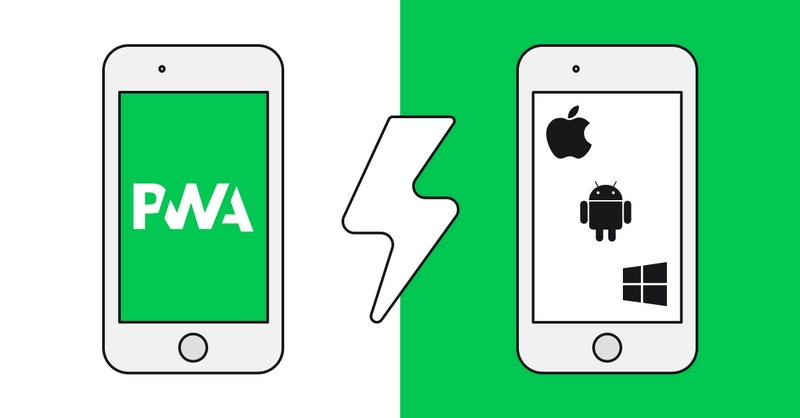
Benefits of PWAs
Recently, many technology enthusiasts have been raving about Progressive Web Apps (or PWAs) because they are the best of both worlds: a web app and a mobile app development. You can get to PWAs through web browsers but are native-app like with some features such as offline support, push notifications, and quicker load times. They are not downloaded from app stores, thus the ability of the user to access them is not challenging, it also makes it easier for business to implement them.
Case Studies of Successful PWAs
Many firms have utilized PWAs and are experiencing positive results in terms of customer interactions with their websites. For instance, Twitter Lite, a PWA, has delivered first-time user engagement beyond expectations by utilizing an easy and faster mobile interface despite slow connectivity. Likewise, for the case of Pinterest the PWA has triggered UX engagement and the time spent on the platform a clear signal that PWAs are effective in proffering a new UX experience.
Cloud-Based Mobile App Development
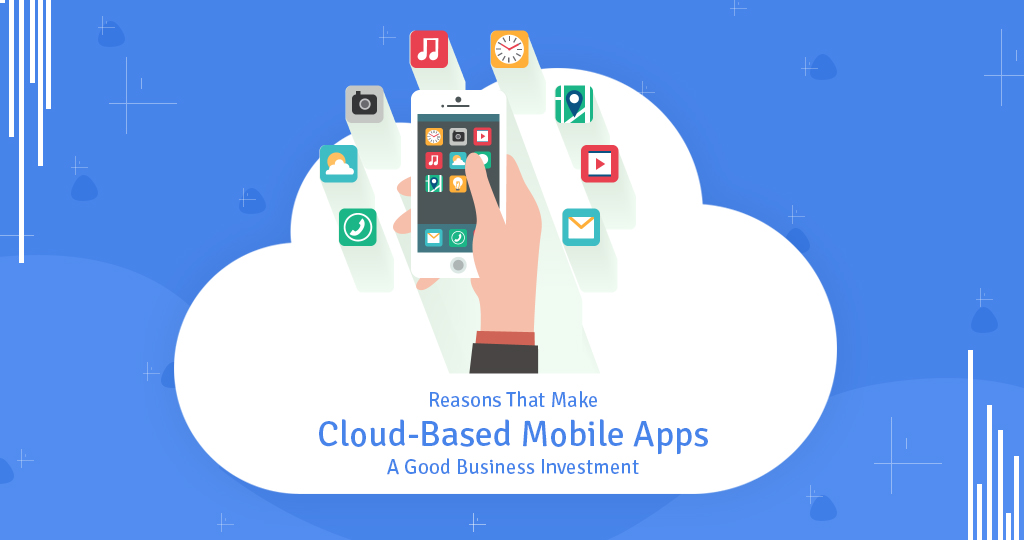
Scalability and Flexibility
Mobile apps that are developed and hosted in the cloud are trending because they can support large volumes while only requiring up to date browsers/handsets. These apps utilize cloud computing for storing, processing and managing the data required with the help of different functions which scale up or down depending upon the user base. For example, a business app hosted through the cloud will not have any problem serving more clients as the traffic and demands come through without hindering the effectiveness of the application or having to acquire more equipment.
Cost-Effectiveness
Cloud infrastructure decreases the required number of invested computers and hardware describing the cost-optimality of cloud based applications. It also brings ease in cases where the developer of the app needs to make changes to the interface since this has to be done on the server and users will not be required to download the changes manually. Therefore the nature of the technological environment is that it allows organizations to provide a constant and current user experience while being cost-effective.
On-Demand Apps
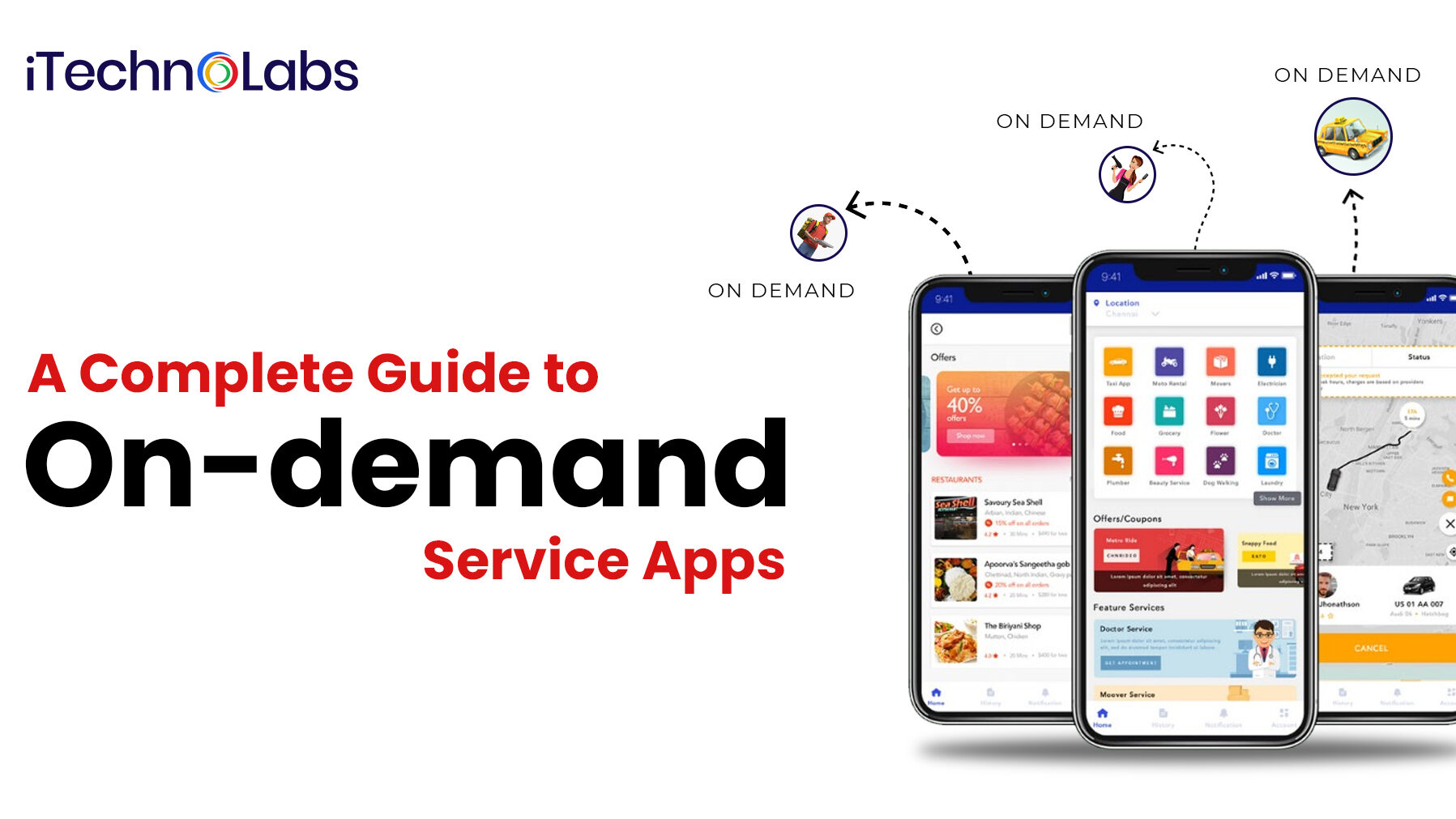
Growth in On-Demand Service
They have become popular and common in our society as they enhance the way in which services are provided to people on demand. On-demand apps can be used in ride-hailing and food delivery, home services where individuals have the ability to tap a button on the screen of their devices for services at the convenience of their doors. This shift is prompted by the need to undertake activities in an efficient and timely manner by leveraging on the mobile applications.
Popular On-Demand App Categories
It can be noted that some of the most common on-demand app categories include transportation such as Uber and Lyft, food delivery apps like DoorDash and Uber Eats, and home services like TaskRabbit and Handy. All these applications have revolutionalised sectors due to the swift and efficient services they offered to customers. First of all, let us consider specific examples: One of the most representative types of PN is the mobile applications that replaced taxis and created a new means of transportation in urban settings. Likewise, fintech apps have improved the functionality and facade of finances, while food delivery apps have provided ease of ordering meals from favorite restaurants and altered the dining experience.
Enhanced Mobile App Development Design
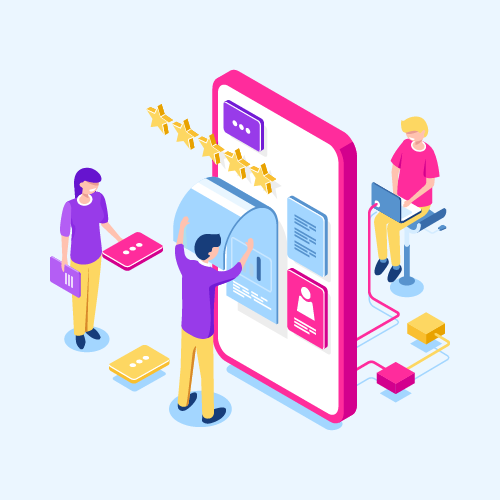
Minimalistic and Intuitive Design
It can be stated that design is among the chief factors in the effectiveness of mobile app development. In this case, a simple design layout allows the users to be able to move through the application fluently and gain the necessary information without much confusion. This makes users more satisfied and even hence they make sure they continue to use the systems. For instance, a cluttered look with centralized accessibility can assist users in finishing actions as fast as possible which makes the app more usable.
Importance of User Experience (UX)
In app design, especially those well-adapted for mobile devices, there is nothing more important than User experience (UX). An app with a good outlook but a complicated user interface can rarely be used and cannot make users stay around to use it. To give focus on UX, developers have to undertake several processes of accumulating user data, feedback, and testing in designing applications. This process involves working with users in terms of their confidence and expectations and ensuring that the final product developed meets or else exceeds their expectations.
Voice-Activated Features
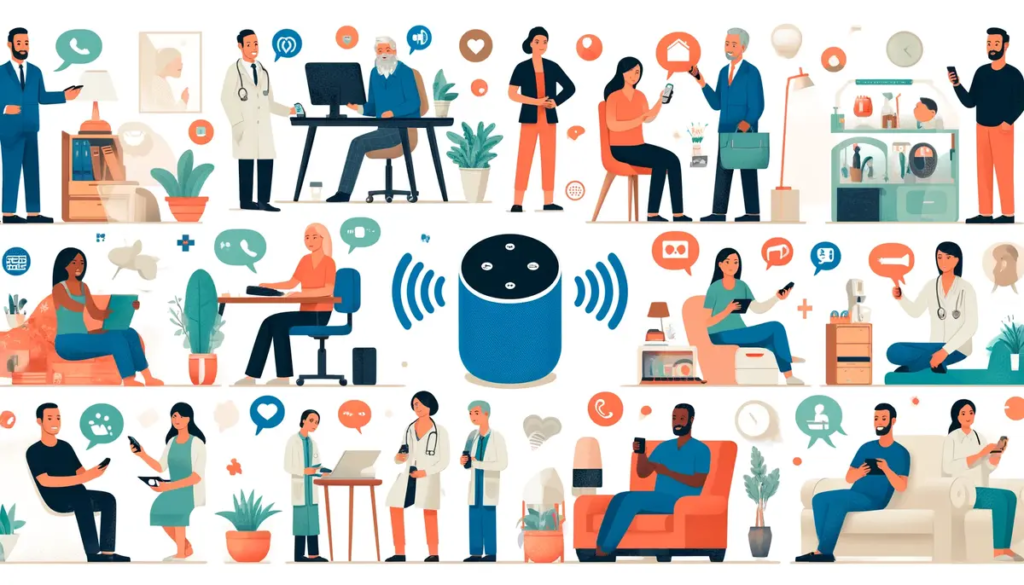
Integration with Virtual Assistants
This will continue to grow as consumers demand devices that will allow them to interact with their devices without having to physically touch them. Using integration with virtual assistants including Siri, Alexa, and Google Assistant, users help in various activities through commanding via voice. For example, a user can ask their assistant to make a call, tell the current weather, remind about an important event or turn off the lights, helping the individual to complete various chores without delay.
Voice Search Optimization
Especially given the rising popularity of voice search, it is crucial to consider how one should adapt applications for this purpose. This has given the developers the fresh understanding of the differences in voice queries from the text search and ensure that the content as well as the features that they are providing is in line with this trend. For instance voice queries are more in the form of questions and longer compared to text queries, which makes it essential for the apps to be able to effectively interpret such queries.
Mobile Commerce (M-Commerce)
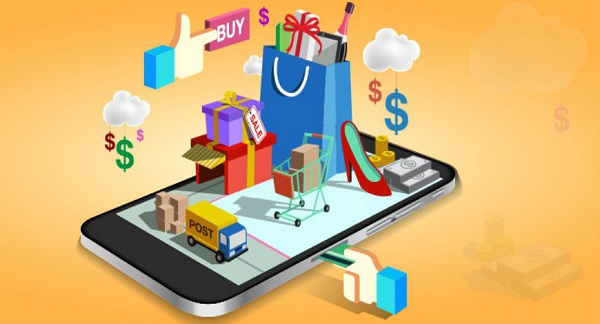
Growth of Mobile Shopping
This is because mobile commerce or m-commerce is gradually becoming popular due to consumer trends that are fawning towards shopping via Smartphones. Some of the features including one-click purchasing, preferred products’ recommendation, and advanced secure payment options are additional benefits that the mobile app development provide regarding the used platforms for the products’ buying and selling. This trend has been occasioned by advanced smartphone usage, coupled with the need to make shopping easy and uncomplicated.
Mobile Payment Solutions
Contemporary payment systems referred to as Mobile payments systems including Apple Pay, Google Wallets and PayPal have made transactions efficient and safe. By simplifying the payment process during check out, these solutions optimise the shopping experience and actually cut down on cart abandonment rates. For instance, in the case of a consumer, they are able to provide their payment details and make a transaction through taps on their smartphone application without having to complete the process again.
The Road Map and Trends in Mobile App Development
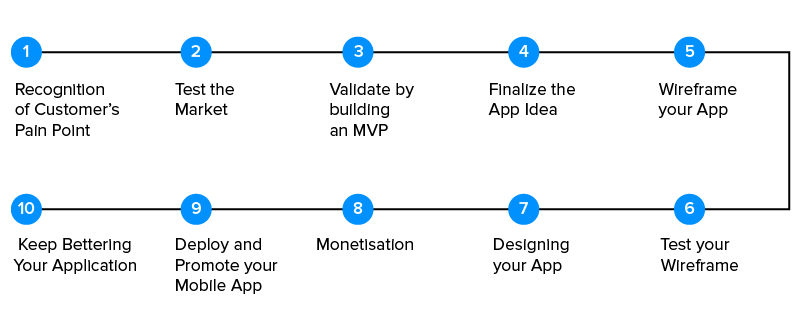
Emerging Technologies
Thus, the outlook for mobile applications further ahead is replete with potential, with IT technologies including artificial intelligence, augmented reality, virtual reality, and the Internet of Things. It is important to note that all of these technologies will persistently define the interface between the user and the mobile app development providing personalized and efficient services in the future. For example, AI convenience applications can present improved identification, whereas AR and VR can convey engaging educational and entertainment values.
Predictions for the Next Decade
As for the outlooks for additional growth in the continual development of mobile applications, one can mention the following trends. For instance, the introduction of 5G experience will bring in a new opportunity to enhance app performance and experience while AI and machine learning advancements will support smart apps. Moreover, emerging technology trends such as blockchain technology for the increased security and transparency of transaction pro- cesses and supports continuous advancements in IoT devices and applications which forming smart worlds.
Conclusion
The dynamics in development of mobile apps is set to change from time to time because of innovation of new technologies and user demands. As much as one would like to believe that they have seen and heard it all in terms of trends, it is crucial that developers keep themselves abreast with the current trends and designs so as to come up with the next best apps. Mobile app development is a progressive field full of tremendous opportunities and potential for development with the help of the new technologies such as 5G, integration of artificial intelligence, the wide implementation of PWAs, and more, including voice-activated features. This should be embraced by developers in order to come up with great experiences that are apt to meet the users’ needs in line with the market trends.
FAQs
How does 5G connectivity affect apps that run on mobile devices and the creation of related applications in software development?
More specifically, 5G has bands with higher frequencies and this means that speeds will be higher and latency lower, something that consumers of applications will give a thumbs up regarding. It improves user-interaction with real time data transmitting capabilities and it enabled features that include Augmented Reality and Virtual Reality.
How does AI become helpful in mobile app advancements?
AI also adds value to mobile applications as users have the chance to receive forecast and elucidations from mobile applications. It also enhances the customer experience through offering robot-based consultations and conversations.
That is why PWAs are gaining relevance today?
PWAs are now becoming the trends as they provide smartphone user interfaces with full functionality without the need to download from app stores. They are swift, operant, and have offline functionality, and highly usable to the users as well economically viable to the business entities.
What are the benefits of cross-platform development?
Basically, it involves using a single code base for developing applications that will run on different operating system and hardware platforms and this leads to reduced development time as compared to development in which an application has to be developed independently for each operating system platform. It also helps in maintaining the standard functional user experience when the application is used on different datum.
How important is app security?
There are two types of protection in any application – positive and negative; application security is important to prevent leakage of users’ information. Applying barriers such as correct access control and other practices, including encryption, shields such data from cyber threats.
